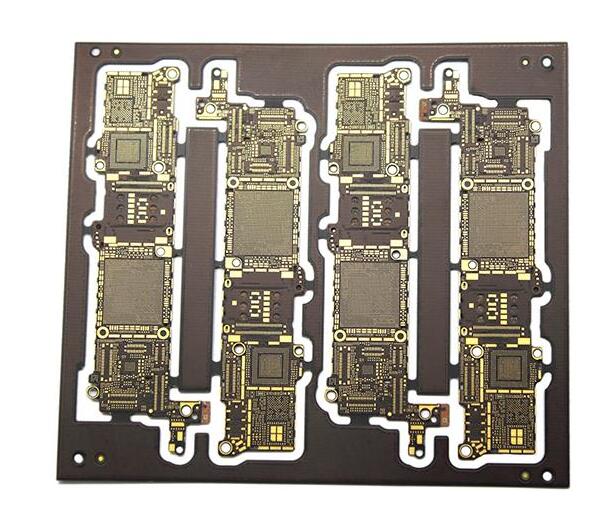The functional holes of the printed circuit board used for surface mounting of the microporous technology are mainly used for electrical interconnection, which makes the application of the microporous technology more important. The use of conventional drill materials and CNC drilling machines to produce tiny holes has many failures and high costs. Therefore, the high-density of printed boards is mostly focused on the refinement of wires and pads. Although great achievements have been made, its potential is limited. To further improve the density (such as wires less than 0.08mm), the cost is urgent. Therefore, it turns to use micropores to improve the densification.
In recent years, numerical control drilling machines and micro-drill technology have made breakthrough progress, so micro-hole technology has developed rapidly. This is the main outstanding feature in the current production of printed circuit boards. In the future, the micro-hole forming technology will mainly rely on advanced CNC drilling machines and excellent micro-heads, and the small holes formed by laser technology are still inferior to those formed by CNC drilling machines from the viewpoint of cost and hole quality.
At present, the technology of CNC drilling machine has made new breakthroughs and progress. And formed a new generation of CNC drilling machine characterized by drilling tiny holes. The efficiency of drilling small holes (less than 0.50mm) of the micro-hole drilling machine is 1 times higher than that of the conventional CNC drilling machine, with fewer failures, and the speed is 11-15r/min; it can drill 0.1-0.2mm micro-holes, and the use of high cobalt content The high-quality small drill bit can drill three plates (1.6mm/block) stacked. When the drill bit is broken, it can automatically stop and report the position, automatically replace the drill bit and check the diameter (the tool library can hold hundreds of pieces), and can automatically control the constant distance between the drill tip and the cover and the drilling depth, so blind holes can be drilled, It will not damage the countertop. The surface of the CNC drilling machine adopts air cushion and magnetic suspension type, which can move faster, lighter, and more accurately without scratching the surface. Such drilling machines are currently in demand, such as the Mega 4600 from Prurite in Italy, the ExcelIon 2000 series in the United States, and new generation products from Switzerland and Germany.

There are indeed many problems with the use of drills to drill tiny holes. It has hindered the progress of micro-hole technology, so laser ablation has received attention, research and application. But there is a fatal shortcoming, that is, the formation of a horn hole, which becomes more serious as the plate thickness increases. Coupled with high temperature ablation pollution (especially multilayer boards), the life and maintenance of the light source, the repetition accuracy of the corrosion holes, and the cost, etc., the promotion and application of the production of micro-holes in the printed circuit board has been restricted. However, laser ablation is still used in thin and high-density microporous boards, especially in MCM-L's high-density interconnect HDI circuit board technology, such as polyester film etching and metal deposition (sputtering) in MCMs. Technology) is applied in high-density interconnection. The formation of buried vias in high-density interconnection multilayer boards with buried and blind via structures can also be applied. However, due to the development and technological breakthroughs of CNC drilling machines and micro-drills, they were quickly promoted and applied. Therefore, the application of laser drilling in surface-mounted HDI circuit boards cannot form a dominant position. But it still has a place in a certain field.
The combination of buried, blind, and through-hole technology is also an important way to increase the density of printed circuit boards. Generally, the buried and blind holes are tiny holes. In addition to increasing the number of wiring on the PCB board, the buried and blind holes are interconnected by the "nearest" inner layer, which greatly reduces the number of through holes formed, and the isolation disk setting will also It is greatly reduced, thereby increasing the number of effective wiring and inter-layer interconnection in the board, and improving the high density of interconnection.
HDI circuit boards with buried and blind hole structures are generally completed by "sub-board" production methods, which means that they must be completed through multiple pressing, drilling, and hole plating, so precise positioning is very important. Therefore, the multi-layer board with the combination of buried, blind, and through-holes has at least three times higher interconnection density than the conventional full-through-hole structure under the same size and number of layers. If the buried, blind, and The size of the printed board combined with through holes will be greatly reduced or the number of layers will be significantly reduced. Therefore, in high-density surface-mounted printed boards, buried and blind hole technologies have been increasingly used, not only in surface-mounted printed boards in large computers, communication equipment, etc., but also in civil and industrial applications. It has also been widely used in the field, even in some thin boards, such as various PCMCIA, Smard, IC cards and other thin six-layer or more PCB board.